Content
- How do you know if your child has a broken collarbone?
- First aid
- Anesthesia
- Immobilization
- Cooling
- Features of conservative treatment in children 2 years old
- Reduction and fixation dressings
- Skin care while wearing a cast
- How to sleep properly
- When is surgery required?
- Recovery period
- Consequences
- Clavicle fracture video
A clavicle fracture is considered one of the most common types of child injury. Especially often children at 2 years old receive such injuries of varying severity. The main cause of injury is considered to be a fall from a height or injury during physical manipulation. Depending on the severity of the lesion, the clinical picture of the disorder, concomitant deviations and some other features differ.
How do you know if your child has a broken collarbone?
A clavicle fracture can be displaced or non-displaced. The skeletal system in children 2 years of age is not sufficiently developed, therefore, most often they have injuries without displacement. This means that the bone tissue is damaged, but there are no bone fragments, there is no displacement and damage to closely spaced tissues.
The clinical picture in children may differ, that the fracture is mistaken for a severe bruise, which is associated with the absence of acute symptoms.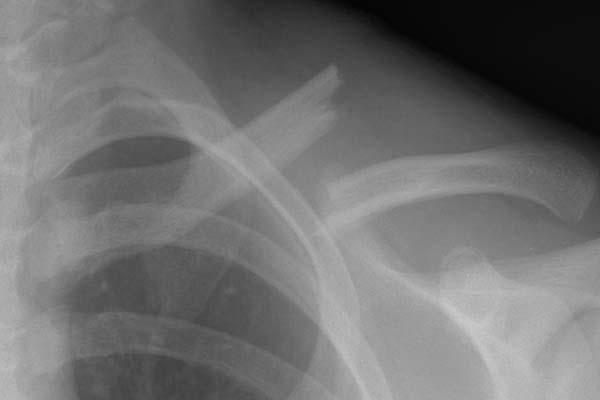
Depending on the degree of tissue damage in a patient, the following manifestations may appear:
- Pain in the area of injury of varying intensity. The severity of the symptom depends on the force of the impact, the height of the fall and some other factors. It can manifest itself with movement or at rest, over the course of several hours it intensifies or becomes less pronounced.
- Swelling of tissues at the site of injury. Usually, edema appears some time after injury, the degree of its severity depends on the neglect of the injury.
- Hematoma at the site of bone damage. The lesion may be small or spread over large areas of the skin. At the same time, there is no soreness of the skin, but with pressure on the hematoma, severe discomfort associated with damage to the bone tissue may appear.
- Decreased motor activity and reduced load on the affected limb. For example, a child may not have swelling or bruising, but pain causes him to restrict movement in the injured arm, which is noticeable when performing normal manipulations.
- Weakness and fatigue.
- An increase in body temperature is not always observed, usually as a result of the development of an inflammatory process.
- Decreased appetite. With severe pain syndrome, the child may refuse food, but the amount of fluid consumed per day increases.
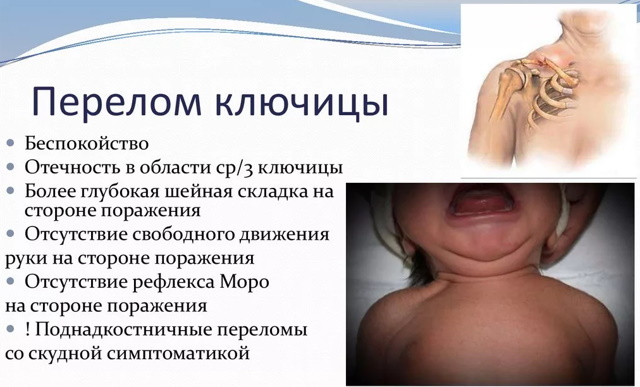
Despite the absence of acute manifestations when diagnosing a fracture without displacement, the child may have different symptoms. It is rather difficult to diagnose a lesion without a special examination. Symptoms are often mild, so a fracture can be mistaken for a bruise. Lack of special treatment will certainly lead to complications.
First aid
Fracture of the clavicle in a child (2 years old - an age that is accompanied by increased physical activity in a child) requires correct and timely treatment, which involves the use of medications, immobilization of the limb and some others Events.
Anesthesia
It is allowed to give the child medication to relieve pain on his own only if there is severe discomfort immediately after the injury. But doctors warn that at home, before the arrival of an ambulance, it is allowed to use only medicines that the child has taken before and has not had negative reactions.
For example, it is allowed to take Paracetamol or Ibuprofen in a dosage appropriate for age and weight. It is difficult to determine the standard rate for everyone, which is associated with the difference in body weight of children.
If the pain does not disappear 20 minutes after taking the drug, you should not use it again in the same dose. Discomfort may persist, but is less pronounced.
Immobilization
An important step in first aid for fracture is the immobilization of the limb. It helps prevent further damage to the bone tissue and reduces the likelihood of displacement, damage to the soft tissue in this area.
For immobilization, you need a bandage, as well as a soft roller, which will allow the manipulation to be carried out correctly.
To ensure the correct position of the hand, it is worth taking several steps step by step:
- Provide peace to the child. It is better to lay him on a hard surface, on his back, in order to reduce the load on the affected limb.
- A soft roller made of bandage, gauze or fabric must be placed in the armpit.
- The arm must be bent at the elbow joint at a right angle.
- With the help of a bandage or scarf, tie the hand in this position to the neck, which will reduce the load on the bone tissue.
- Tie the limb to the body with a bandage.
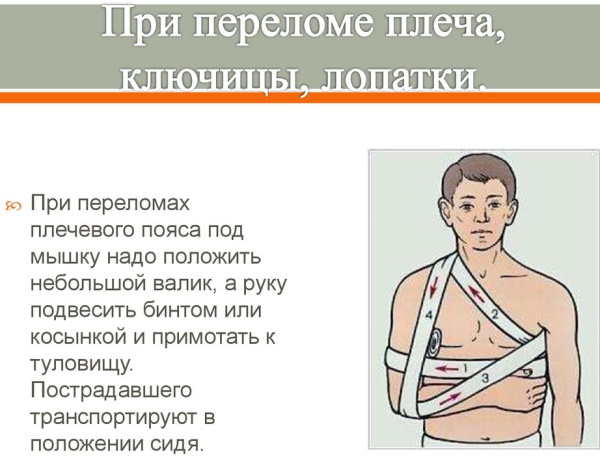
Do not make the bandage too tight, but the arm should not move freely under it. Further measures will be taken by the doctor after the arrival of the ambulance.
Cooling
A fractured collarbone in a child is often accompanied by swelling and pain. Children at 2 years old may experience severe discomfort, even in the absence of load on the limb and after its immobilization. That is why it is allowed to apply cold to the affected area.
This could be ice or a bottle of cold water taken from the refrigerator. Be sure to apply cold after immobilizing your hand to avoid skin contact. After exposure for 20 minutes, it is necessary to take a break, then apply cold again. Such manipulations are carried out before the arrival of an ambulance. In the hospital, the doctor may also prescribe cold to prevent severe swelling.
Features of conservative treatment in children 2 years old
Usually, patients with a fracture without displacement do not require any special treatment. At the same time, therapy is symptomatic, that is, it involves the appointment of medications to eliminate a particular symptom.
Treatment is carried out at home, but constant supervision of a pediatric traumatologist is required. Only sometimes the patient is admitted to the hospital. Different medications can be used depending on the symptomatology.
| Product name | Application features |
| Panadol | Paracetamol-based syrup, which is actively used to eliminate pain and normalize body temperature. It is taken to relieve the condition during the first 3-5 days after injury. Experts pay attention to the fact that taking the drug is indicated only if there are symptoms. If the child is not worried about pain and the body temperature does not rise, there is no need to take syrup. The dosage for each child is determined individually, depending on the weight. 1 kg of body weight accounts for 15 mg of medication. During the day, you can take the medicine no more than 4 times at approximately equal time intervals. 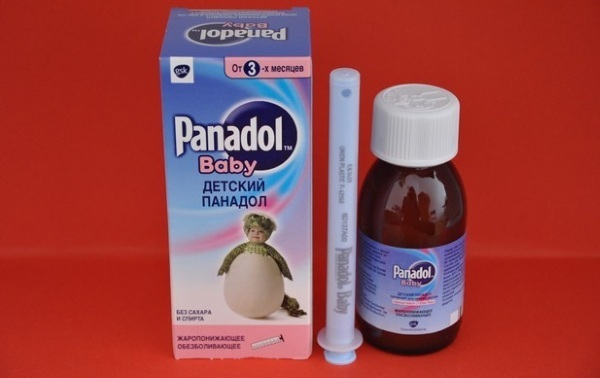 |
| Ibuprofen | The drug is based on the active substance of the same name, which is prescribed in the case when drugs with paracetamol do not bring a pronounced result. The medication not only lowers the body temperature, but also relieves the inflammatory process, eliminates the pain that appears in the first few days after injury. For children, children's syrup is used, and the dosage is determined depending on the weight. Usually, patients 2 years old are prescribed to take the drug 2-3 times a day with approximately equal time intervals. A single dosage is 3-5 ml. It can vary depending on body weight and individual characteristics of the organism. The duration of the drug should not exceed 5 days, but the treatment must be agreed with the doctor. |
| Analgin | A drug with analgesic properties, which is usually used when a patient is admitted to a hospital. It is administered intramuscularly at a dosage of 0.2 ml. Repeat the manipulation no more than 2 times a day with severe pain and an increase in body temperature. The drug not only eliminates discomfort, but also lowers the temperature for a long time, unlike many short-acting antipyretic drugs. |
| Amoxicillin | An antibacterial medication is prescribed to patients with the development of an inflammatory process against the background of soft tissue damage. The tool destroys pathogenic bacteria and prevents the spread of inflammation to healthy tissues. Usually, a suspension for oral administration is prescribed to patients at the age of 2 years. The dosage of the drug is also determined depending on age and is not more than 20 mg per 1 kg of body weight per day. The daily rate must be divided into 2-3 doses during the day, and the duration of treatment can be 5-10 days, depending on the severity of the symptoms.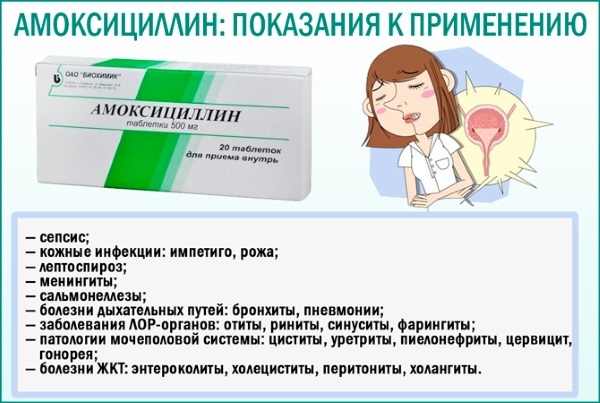
|
Special means for accelerating the process of bone tissue restoration are not prescribed to children in the absence of displacement and a large number of fragments. Usually, tissue is restored within a short period of time if all the rules are followed and the patient is regularly examined by a doctor.
Conservative therapy may not be carried out if the child does not have pain and concomitant manifestations. For example, for the first 2 days, a child may receive a minimal dose of pain reliever, but no other medications are prescribed.
Reduction and fixation dressings
A fracture of the clavicle in a child at 2 years old often does not provoke complications, it proceeds in a mild form. In the absence of displacement, repositioning is not required. This manipulation involves the restoration of the affected bone after damage and the formation of several fragments, displacement.
In severe fractures with displacement, as well as open fractures, it is necessary to perform reduction with the use of local or general anesthesia. The manipulation is carried out in a hospital, it involves monitoring the patient for 1-3 weeks after it. The patient must be in the hospital for a period determined by the doctor. This reduces the likelihood of complications.
Depending on the degree of damage to the bone tissue, the specialist determines the type of bandage that will fix the limb for a certain period of time.
In case of a fracture without displacement, 3 types of fixing dressings are used:
- Scarf bandage, which involves fixing the limb in the correct position, but does not completely restrict movement.
- Delbe's Rings used if necessary to maintain bones in a certain position, as they restrict movement. This is usually necessary when the lesion on the bone tissue is enlarged in the case of a standard scarf dressing.
- Dezo's bandage assumes a tight fixation of the limb, while the bandage is located not only at the site of the lesion, but also on the trunk. When such a bandage is applied, the fixation is reliable, the risk of complications is somewhat reduced.
Only in case of bone displacement, damage to closely spaced tissues, the development of complications is it necessary to apply a plaster cast. The procedure is carried out according to the standard scheme, if necessary, pain relievers are used to facilitate manipulation.
Skin care while wearing a cast
If the degree of tissue damage requires the imposition of plaster, it is necessary to follow some rules to prevent the development of complications from the skin and bones. During the entire period of wearing the plaster, the ingress of water on the material should be prevented. This can lead to deformation, displacement and deterioration of the fixing properties.
In the area of the dressing, the skin should be gently treated with a damp cloth made of natural material. When washing the baby, you can use cling film or cellophane to prevent moisture from getting on the plaster. In the area of the dressing, the skin often becomes dry, sometimes microscopic cracks appear. To prevent such complications, you can treat the tissues with baby cream.
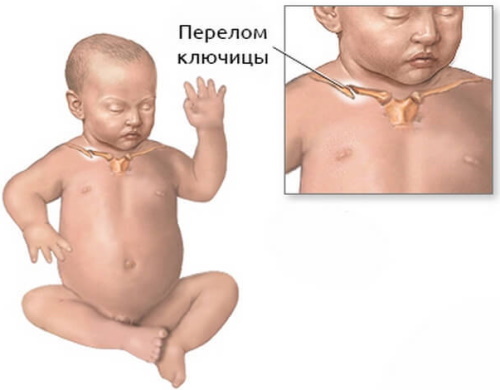
If the child is prone to allergies, it is better to choose an odorless cream and synthetic components that can provoke negative reactions. Throughout the entire period of wearing the bandage, the child's patient is examined by a doctor several times, determining the further duration of the rehabilitation period. With proper skin care, complications, inflammation and other negative reactions do not develop.
How to sleep properly
A fracture of the clavicle in a child at 2 years old is accompanied by many inconveniences that disrupt the patient's usual rhythm of life and cause serious discomfort. It is important to help the child to take the correct body position during sleep.. You should not lean on the affected limb during sleep.
It is better to lie on your back or on the opposite side to reduce stress on the affected area. Discomfort during sleep may differ depending on the degree of neglect of the injury, but when the correct position is adopted, it is minimized.
Throughout the entire period of wearing a plaster cast or a fixation bandage, you should observe the child during sleep, so that when the need to change the position of the body, eliminating the risk of complications as a result of increasing the load on the affected bone.
When is surgery required?
If the child does not have any signs of displacement during the X-ray examination, surgical intervention is not performed. A fixation bandage and adherence to some of the doctor's recommendations are enough.
However, with the development of complications in the form of displacement, damage to soft tissues, skin, it is necessary to place the patient in a hospital and carry out an operation to restore tissues. It is performed under general or local anesthesia and involves the restoration of bone fragments, as well as the elimination of soft tissue particles that cannot be restored. They can provoke complications during the rehabilitation period.
After the operation, the patient is in the hospital for 2-3 weeks under the supervision of a doctor. In the event of complications or improper fusion of bone tissue, it may be necessary to repeat the manipulation.
Recovery period
A broken collarbone in a 2-year-old baby is usually quickly treated with some medication and wearing a bandage. Within 2-4 weeks, the bone tissue is completely restored if there is no displacement or other complications.
When signs of displacement, complications in the form of inflammation, lesions of soft tissues appear, the rehabilitation period lasts up to 8 weeks, but in each case this period is individual.
During rehabilitation, some recommendations must be followed:
- Restriction of physical activity until complete tissue repair. It is not forbidden to move, but you should not load the affected limb, as well as overwork.
- Complete nutrition, excluding the use of fast food, carbonated drinks and confectionery.
- Taking medications only as prescribed by a doctor, as well as for a period specified by a specialist.
- Correct wearing of the fixation bandage.
Compliance with these rules can reduce the risk of complications, and also speed up the process of tissue repair.
Consequences
With a fracture without displacement and timely assistance to the patient, complications do not develop so often. But their appearance cannot be ruled out. Most often, the consequences are associated with the displacement of bone tissue.
The most common consequences are:
- Improper bone fusion in violation of the rules for wearing a bandage or increased stress on the affected arm.
- The appearance of a seal in the area of the fracture, which prevents tissue repair.
- Damage to soft tissues, the formation of a large number of fragments.
- An inflammatory process at the site of the lesion, spreading over large areas.
- Deterioration of the condition of the muscle tissues of the limb due to the lack of load during the rehabilitation period.
- Severe pain that does not disappear even after bone regeneration.
- Violation of the amplitude of movement of the limb, which persists after the termination of wearing the fixation bandage.
These and some other complications are considered a reason to see a doctor.
A fractured collarbone is considered a common injury. It is especially often observed in a child at the age of 2 years and requires timely treatment in order to prevent the development of complications.
Clavicle fracture video
Fracture of the clavicle in a child with displacement:
